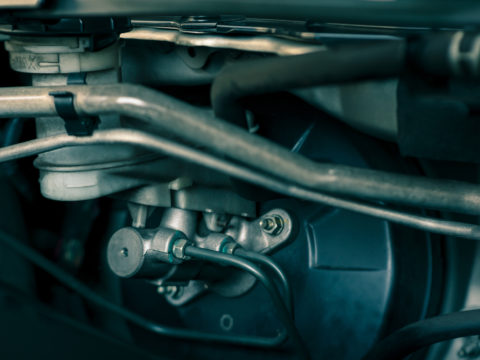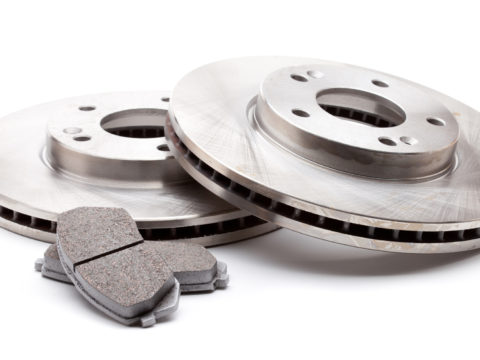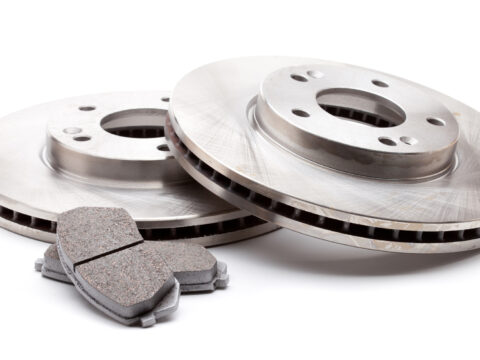Automotive maintenance can get expensive and be a tad confusing. It follows then that mechanics and car enthusiasts look for ways to make the most of the products they purchase. While brake cleaner performs the essential function of removing dirt and brake fluid from your brakes, users should apply it only on appropriate surfaces and be aware of its possible alternative uses.
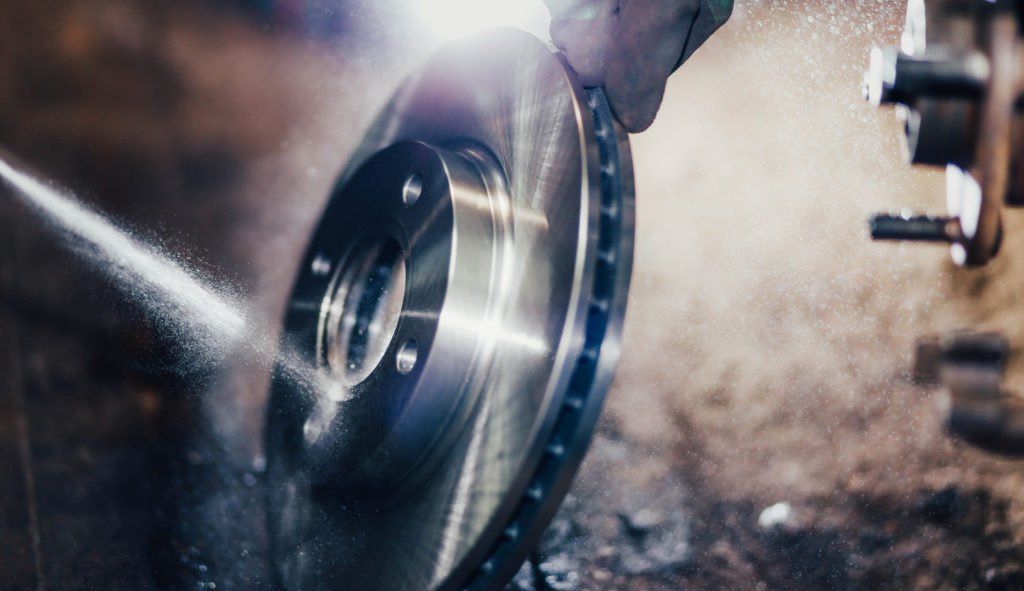
Contents
Will Brake Cleaner Remove Car Paint?
Like everything else on your vehicle, your brakes require cleaning as a part of its regular maintenance. Manufacturers develop cleaners from various chemicals, such as acetone, depending on which cleaner you purchase.
These chemicals are commonly found in other cleaners, allowing for alternative uses. You may wonder, however, will brake cleaner remove car paint? While brake cleaner’s intended use is to remove the buildup of dirt and brake fluid from your car’s brakes, brake cleaner can also remove car paint.
When cleaning your vehicle’s brakes, getting the cleaner on other parts of your car is entirely possible. Understandably, you don’t want anything to hurt your vehicle’s paint or add additional automotive issues. So, it is best to avoid getting brake cleaner on your car’s paint if at all possible.
What Happens if You Get Brake Cleaner on Paint?
So, if you do get brake cleaner on your car paint, it will damage the paint. This occurrence is due to the various chemicals in the cleaner and how they react to the paint. It wouldn’t, however, be a clean removal of car paint. The interaction of the cleaner and paint would cause the latter to peel and chip. This interaction isn’t necessarily the case for all car paints, but avoiding getting the cleaner on the car is the best way to avoid the issue altogether.
Does Brake Cleaner Remove Spray Paint?
Brake cleaner can remove spray paint; however, you should consider other options like nail polish remover or lacquer thinner first because they are much safer for the user and the environment. If required, however, brake cleaner could assist in removing spray paint, but make sure only to use it on metal areas of your car as it could damage the plastic.
How Fast Will Brake Fluid Remove Paint?
You may get some brake fluid on your car’s paint when working on your brakes. It would seem the best way to remove the fluid is to use brake cleaner, but, as mentioned above, that isn’t the case. It is always advisable to avoid getting brake fluid on your vehicle’s paint; however, sometimes, these situations are unavoidable. Once the brake fluid has touched the car’s paint, the damage will appear shortly.
Sometimes, the damage will show as quickly as thirty minutes. While the estimates for damage visibility vary, the removal process begins immediately. You may be lucky enough to have purchased a brake fluid that has a less significant effect on your vehicle. This possibility is due to the varying chemicals used from product to product. Still, it is always best to begin safely cleaning using a towel while wearing gloves.
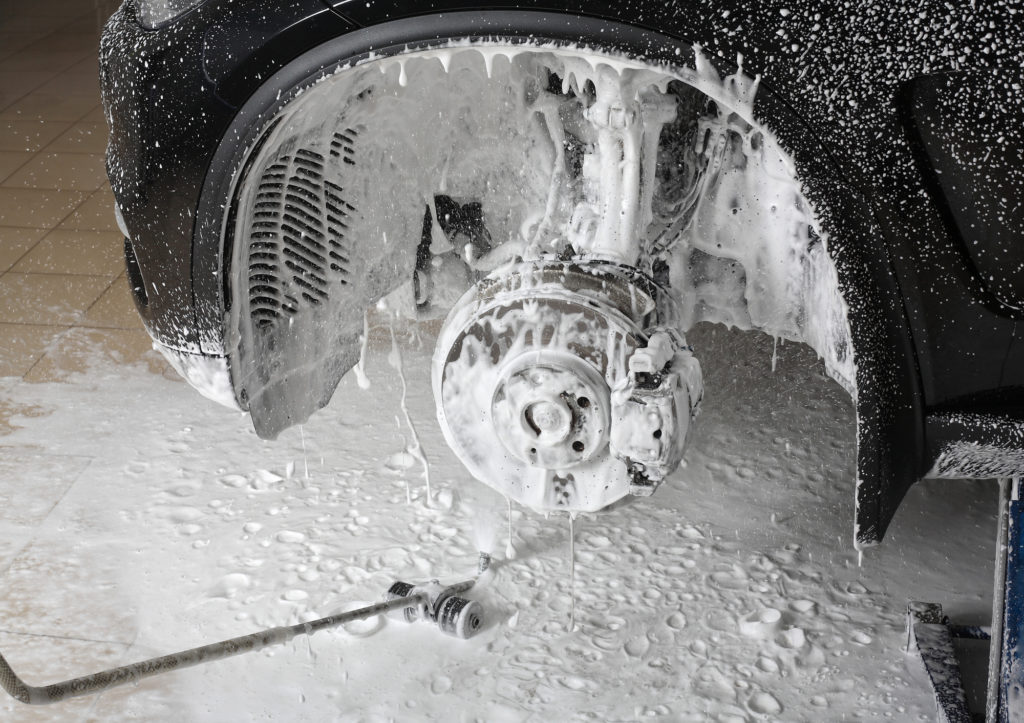
How To Get Brake Cleaner off Paint
Car owners can use the same procedure for removing brake fluid to remove brake cleaner from their paint. Begin by dabbing the cleaner with a towel. Make sure not to rub it in because this will exacerbate the situation. Once you’ve soaked up what you can with the towel, rinse and wash off the remaining residue.
What Should You Not Use Brake Cleaner On?
Never use brake cleaner on the following:
- Near open flames
- Inside of your vehicle
- Powdered paints
- Plastic materials
Never use brake cleaner near open flames or other hot areas. This use can make the cleaner become dangerous to the user. Furthermore, avoid using brake cleaner inside of your vehicle, on powdered paints, and on plastic materials. Allowing the fumes inside your car’s cabin is unhealthy for the driver and passengers because of the previously mentioned chemicals. If brake cleaner gets on powdered paints, they will dissolve.
The plastic materials are particularly deceiving with brake cleaner because they will get cleaner before falling apart. The result may be appealing, but this cleanliness is not worth damaging your vehicle’s plastic parts. Again, if you get brake cleaner on your skin, rinse it off and wash your skin immediately. If ingested, seek immediate medical attention.
Alternative Uses for Brake Cleaner
While brake cleaner’s intended use is to clean your brakes, it has other possible benefits. Most of these uses are for mechanics and car enthusiasts. This way, after cleaning your car’s brakes, you can perform different tasks for your vehicle with the cleaner or wrap up your day working on your car by cleaning up any messes.
Cleaning Other Metal Parts in Your Car
Cleaning metal parts in your vehicle, such as nuts and bolts, is another use for brake cleaner. While the primary purpose of the cleaner is for your brakes, it can quickly assist in cleaning metal. Make sure, however, to avoid plastic and paint as these materials will be negatively affected by the cleaner.
Cleaning Cement
When working on their vehicles, car enthusiasts and mechanics frequently spill paint, oil, or other staining materials on cement. Brake cleaner removes the paint from the cement similarly as it does from the vehicle; however, in this instance, you’ll want the paint removed. Make sure to use it responsibly so that you are only cleaning the spill area. Furthermore, rinse the place well after removing the paint, oil, or stain.
Removing Oil Stains
Again, working on our vehicles can be a messy practice. Brake cleaner comes in handy with oil stains on our clothes or shop towels. Use sparingly only on the affected area to remove the stain. This stain remover is more potent than others and provides an additional option to remove your more stubborn oil or paint stains. With these practices, you’ll have cleaned the metal in your car, your working area, and your clothes.

